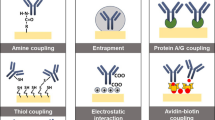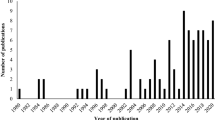Abstract
A bioassay was developed to measure insecticide residues using fruit flies (Drosophila melongaster). After adding a known volume of sampling solution, the time at which 50% of the flies were dead (LT50) was recorded and cross-referenced to the appropriate calibration curve. Using known standards, comparable results were obtained using the bioassay and GC-MS. The bioassay allows concentrations of synthetic pyrethroids as low as 1 pg L−1 to be measured with a variance of < 5%. The bioassay can be used reliably over a wide range of temperatures and it is tolerant to a range of pH and surface tensions of the test solution. The whole bioassay is compact, physically robust, and simple to use; hence, it could be of use in the field as a quick preliminary assessment of water contamination.
Similar content being viewed by others
Author information
Authors and Affiliations
Additional information
Received: 19 November 2000/Accepted: 4 April 2001
Rights and permissions
About this article
Cite this article
Grant, R. A Bioassay for the Measurement of Insecticide Concentration. Arch. Environ. Contam. Toxicol. 41, 319–324 (2001). https://doi.org/10.1007/s002440010254
Issue Date:
DOI: https://doi.org/10.1007/s002440010254




